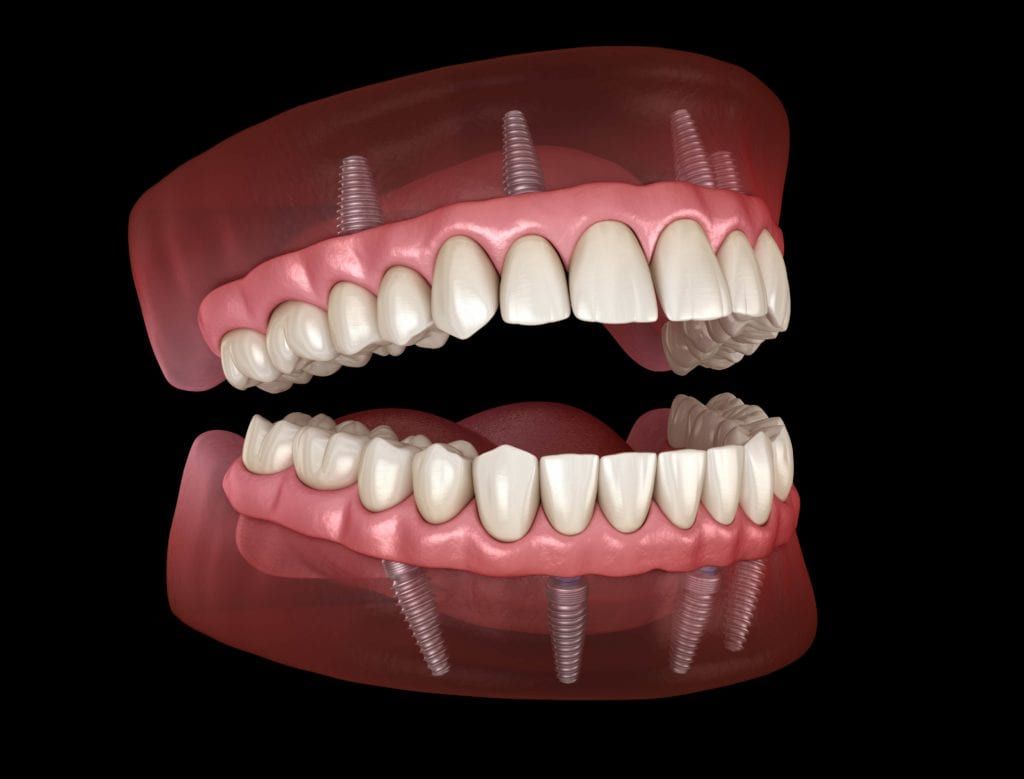Did you know that as many as 36 million Americans have no teeth?(Source). The condition of having no teeth is known as edentulism. In most cases, the elderly are prone to edentulism because of excess plaque accumulation, gum disease, and certain medical conditions such as diabetes, hypertension, and rheumatoid arthritis. Edentulism can be extremely problematic because it can cause nutritional changes, obesity, diabetes (if the patient does not already have it), coronary heart disease, and some forms of cancer.
In cases where a patient is completely edentulous, a full mouth rehabilitation is highly recommended by dentists. full mouth rehabilitation procedures allow the dentist to restore the entire upper and lower arch of teeth. One healed from the procedure, patients generally experience almost a complete restoration of their previous function.
While many patients may hesitate at the thought of having a full mouth rehabilitation , the process is actually not as complicated as many people think. In fact, full mouth rehabilitation s use dental implants paired with an implant-supported denture and are as easy as 1-2-3! Here are the three steps of a full mouth rehabilitation :
Step #1: Consultation

The first step is to schedule a consultation with an experienced cosmetic dentist who has successfully performed full mouth rehabilitation s before. During the smile design consultation, you can expect your dentist to examine any existing teeth, as well as your gums. You can also expect to be asked about your treatment goals, medical history, and current medications. They will likely also take x-rays to determine how much bone mass you have, as well as a possible CBCT scan to get a look at all the underlying structures. All this information is necessary so the dentist can determine if you are a good candidate for a full mouth rehabilitation .
If you are found to be a good candidate and consent to treatment, your dentist will explain their treatment plan for you, discuss what you should expect, and answer any questions you may have. Finally, the procedure will be scheduled for a later date and you will receive instructions on how to prepare. In most cases, you will need to fast before the procedure and you may even be prescribed medication to take ahead of time.
Step #2: Treatment

The day of your appointment, you will arrive at the designated time. Before starting the procedure, your dentist will sedate and anesthetize you to keep you comfortable and relaxed. Depending on the level of sedation used, you may not even remember your procedure. In some cases, tooth extractions may be performed to remove any remaining teeth that are decayed or damaged.
Once any remaining teeth are extracted, your dentist with place 4-6 dental implants on both the top and bottom arch. Dental implants are artificial tooth roots made from titanium screws. They are placed by making a small incision in the gums, shaping the remaining tooth socket, and inserting them into the socket. After the are placed, a connector piece is generally screwed into the implant. The gums are then sutured up over the implants and around the connector piece so that it can be seen above the gum line. This process will be repeated until all the required implants are in place. A temporary denture will then be placed.
Step#3: Recovery
The last and final step is recovery. You can expect to feel sore and possibly swollen for the first few days following your procedure. In most cases, patients do not report a tremendous amount of pain following their implant placement procedure and usually only require over the counter pain medications. For the first couple of weeks after having your implants placed, you will need to maintain a soft foods diet. Eventually your dentist will let you know when to start moving onto harder foods. With dental implants, it is highly important that you follow all post-operative guidelines so that the implants won’t move.
This is because dental implants must undergo a 3-6 month process called osseointegration, where the implant screws fuse with the surrounding bone. A dental implant is only considered successful when this has happened. However, exerting too much force too soon can prevent this from happening. Once your implants have completely healed, a dental impression or oral scan will be taken of your mouth and used to fabricate your permanent implant-supported dentures.
As you can see, full mouth rehabilitation s are not as complicated as you may have initially thought. The entire process is as easy as 1-2-3: consultation, treatment, recovery. Additionally, this process is made much easier by choosing the best cosmetic dentist in your area. If you are one of the 36 million Americans with edentulism, schedule a consultation with your local cosmetic dentist and get your smile back today!

